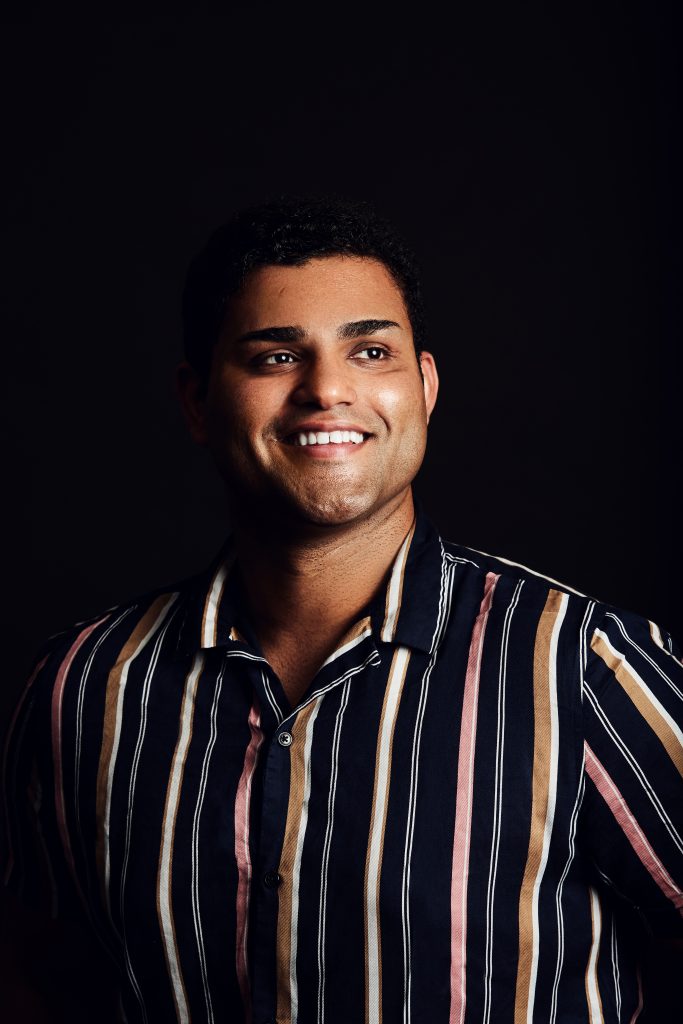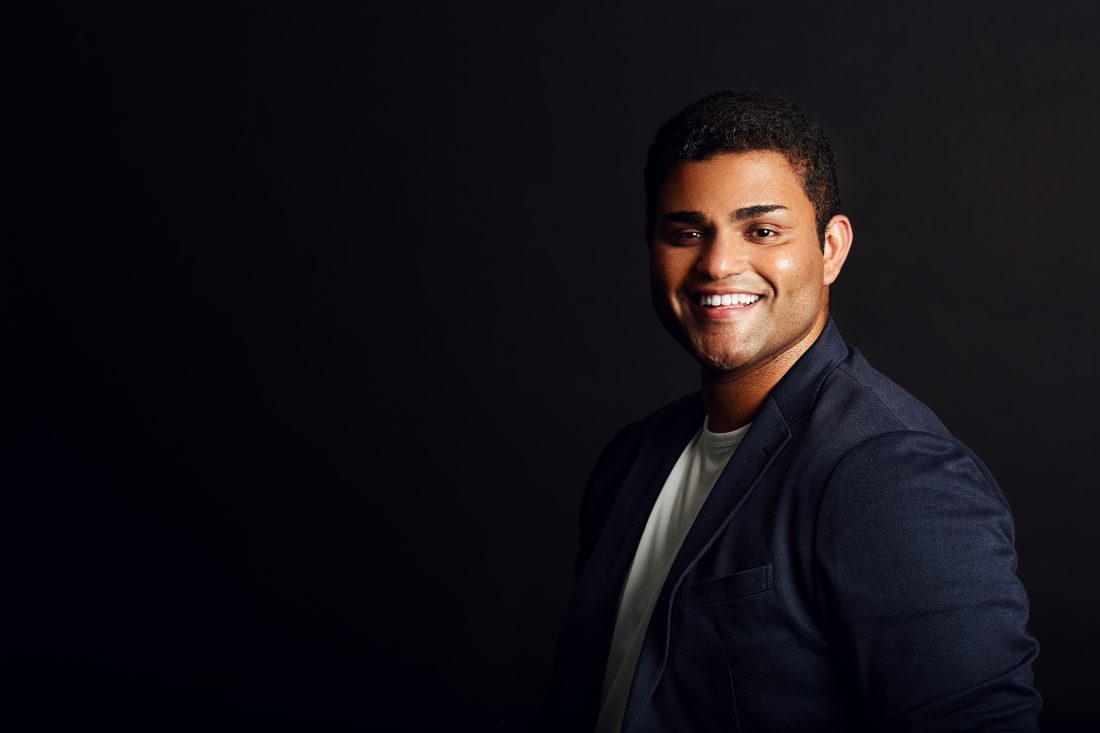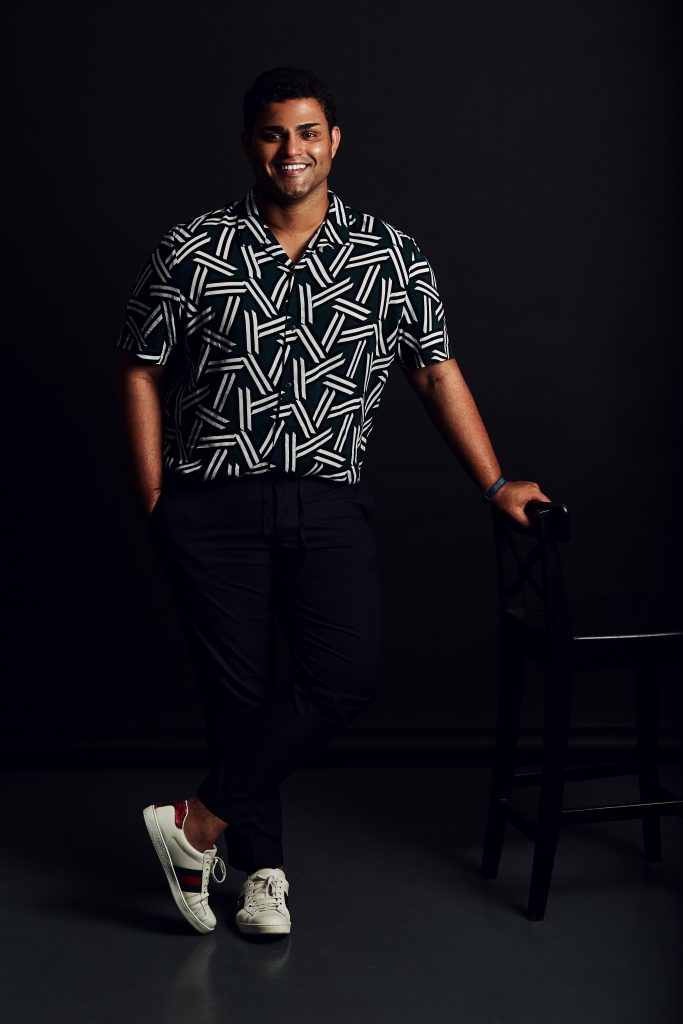Ogilvy’s Head of Influencer Marketing talks to Alice Audley about fees, fraud and how we can move this industry forward
Photography: Kyle Galvin

“We’ve paid everything from £100 to £500,000+. And even more. On one influencer,” says Ogilvy’s Head of Influencer Marketing Rahul Titus.
“Influencers being paid to work is not a bad thing – they are giving a service and should be paid for it. I don’t think the ‘should they be paid’ conversation should even exist,” he continues.
“But, I do think as an industry, we need to try and formulate and shape the monetary conversation because none of us share notes right now, which is really bad. I know for a fact that there are certain influencers who go to an agency and get paid three times what another agency would pay them.”
Improving the dialogue around influencer marketing on an industry level is one of Rahul’s main aims.
Having worked in the field since 2010 (first at Mediacom, then in talent management at James Grant, and now at Ogilvy), the 28 year old is one of the few bona fide influencer marketing experts around – and his clients trust him to manage multi-million pound budgets and campaigns. During his eight years in the space, he’s worked with the likes of Tanya Burr, Casey Neistat and Jim Chapman (to name but a few), and seen the evolution of the industry first-hand.
“When I first started working it was with bloggers. Then YouTube became massive, and the focus moved onto video – it was fun and interesting and that’s where clients wanted to spend. That lasted quite a long time.
“But in 2016, I saw it go one step backwards and it was all about micro- influencers. Now what I’m seeing is brands still wanting to do micro- influencer stuff, but also keen to do long-term partnerships with influencers. We’re seeing brands become more strategic.”
As brands become both more strategic and educated in influencer marketing, the key question they want answered is what is their ROI [Return on Investment].
“This is the biggest conversation I’m having with clients, brands, and influencers at the moment – because it’s something that we need to answer,” Rahul says.
“I get pulled into a lot of CMO [Chief Marketing Officer] meetings where they’re saying: ‘I’m spending X amount of money on influencers, what is my ROI?’
“On most other channels in the marketing/advertising mix, you can go back and say ‘you spent £10 on social, this is what I’m bringing back for you’. With influencer marketing, we don’t have that answer yet; I don’t think anyone in this industry does. But, as technology improves, I am confident that we will get there.

“Currently, ROI is measured through a blend of tracking engagement and sentiment analysis – I think this is the year of the ‘test and learn’ for most of our clients and brands in the space.”
One measurement that Rahul believes is redundant is that of ‘reach’. “I get really angry when people say ‘this influencer has a reach of 7.5 million’. Just because someone has 7.5 million followers, it doesn’t mean my brand
is getting 7.5 million followers – that’s just not how it works. But we still unfortunately see a lot of people in the industry talking in those terms.
“It’s not reach based anymore, we need to move into talking about ‘true reach’ – for instance, I might get this influencer who has 7.5 million followers, but gets 200,000 views – that’s the true reach I’ll get from working with them and that’s the statistic I’m interested in. Don’t tell me you’ve got 7.5 million, tell me you’ve got 200,000 – I’d rather pay for that. ‘We had the opportunity to reach 7.5 million followers’ means nothing.”
Another problem facing the industry, Rahul says, is the increase in fake followers.
“Some brands have been stung really badly – it’s such a shame because they have invested a lot of time, effort and money into influencer marketing and we have let them down as an industry.
“We have evaluation tools, but at the end of the day what I’m going to be looking at is if someone has had a massive increase in their following with no explanation as to why, or someone has had an extremely high engagement rate and response rate to their content – more so than normal – then there’s clearly something fishy going on. We’ve got the data and technology that we use all the time and can spot something like that immediately.
“As an influencer, if you are tempted to go down the route of bots and fake followers, I strongly advise you not to – especially in today’s day and age because technology is catching up really fast and people have been in
this industry long enough to tell when someone has spiked their numbers up.” Building up an honest – bot-free – brand is key to being a successful influencer, Rahul says. And so is authenticity.
“I know it sounds very cliché, but I kid you not – I’ve worked with more
than 1,000 influencers across multiple markets over the past eight years and the one thing brands like more than anything else is somebody who is authentic to themselves.
“I can spot immediately if someone is not real – and I think that the audience can as well. An audience is very good at figuring out when you don’t genuinely like something – whether it’s through your facial expression or the content itself, it shows.
“If you’re working with a brand and you cannot find a middle ground where it works for you as well as the brand, walk away! Why would you go forward with a campaign with a short monetary gain that will mess up you long-term brand?
“I’ve walked away from deals multiple times and my clients and brands always thank me for it in the end – you’ve got to think about the next 12 months, not this week. I say this as someone who used to be a social talent agent – and talent management is done on a monthly basis in terms of revenue. I wanted to say to them ‘you’re not about business, you’re managing people’. You can’t say this month X person made X amount of money, that month they didn’t. Over the 12 months it’s going to balance out, so why wouldn’t you focus on the 12 months rather than the Jan strategy or the Feb strategy?”

Social talent management, Rahul thinks, is in a precarious position as of late. “There are not enough people who can give strategic advice from a social or digital point of view for an influencer. If I’m a teenager with five million followers and I know exactly what I’m doing, why would I go and talk to a 40-year-old who’s been in talent management for 20 years to figure out digital? They don’t have any idea of what the industry is!”
Does this explain the recent max exodus of talent from management? “Absolutely. Most influencers know what they’re doing, so what is the value added that you’re going to give them to stick with you? A lot of the time 2-3 years ago, it was contracts and negotiations – making sure you had the right amount of deliverables. It was pushing back. It was being a PA. And you can hire a PA and get all of that done, which lots of influencers are now doing.
“I think a talent agency’s role in all of this new world of influencer marketing needs to be strategic. You need to come to an influencer and tell them what their 5-year plan is, what their 10-year plan is, what their vision should be – that’s where a big realignment is happening in this industry right now. And we are seeing a whole new breed of influencer talent agencies so I’m really excited to see where that space goes, including the one Joe [Sugg] and Caspar [Lee] launched recently [Margravine Management].”
Rahul is excited about the future of the influencer industry in general, too.
“It changes so quickly,” he says.
“Most people don’t know what’s going to happen in six months, let alone a year.
“In terms of trends, I’m seeing the rise of long-term partnerships and direct relationships with influencers. When I start a campaign now, I will organise an intro meeting – could be a lunch – between my client and the influencer.
“I think the best ideas come from that because the client knows the brand better than anyone else does and the influencer knows themselves, their audience and what they can do better than anyone else – so my rule is not to constrict them. I will facilitate a creative conversation that gives us better engagement – so it’s a very important part of the puzzle.
“This space is so new that it comes down to us to shape its future, which is why it is so important to have open conversations. I really think that all the problems we have in the industry could be solved if we talked a bit more.”
